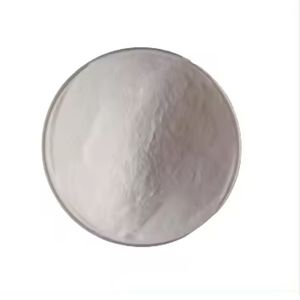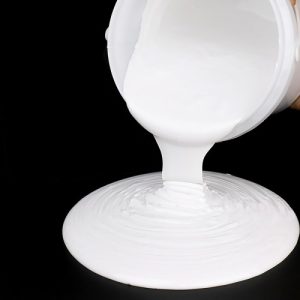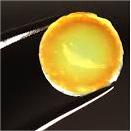Professional industry ceramic supplier, silicon nitride, silicon carbide, aluminum nitride and any other kinds of ceramics.
PRODUCT PARAMETERS
Description
Overview of s ceramic fiber aerogel blanket//
s ceramic fiber aerogel blanket// is a synthetic porous ultralight material derived from a gel, in which the liquid component has been replaced with a gas. The result is a solid with extremely low density and low thermal conductivity, often nicknamed “frozen smoke.” Despite its fragile appearance, it can be engineered to be remarkably strong, holding the title of the world’s best insulating solid material.
Features of s ceramic fiber aerogel blanket//
-
World’s Lowest Thermal Conductivity: Provides unparalleled insulation performance, far superior to traditional materials.
-
Extremely Low Density: One of the lightest solid materials known to man, with a composition of up to 99.8% air.
-
High Surface Area: Possesses an incredibly large internal surface area, making it valuable for filtration and absorption applications.
-
Versatile Composition: Can be made from various materials, including silica, carbon, and metal oxides, each with unique properties.
-
Exceptional Porosity: Its nanoporous structure is responsible for its outstanding insulating capabilities.
Specifications of s ceramic fiber aerogel blanket//
Ceramic fiber aerogel blanket is a high-performance insulation material. It combines ceramic fibers with aerogel technology. This material offers exceptional thermal properties. It handles very high temperatures well. The blanket withstands continuous use up to 1200 degrees Celsius. Short-term exposure to even higher temperatures is possible. Its thermal conductivity is extremely low. This means heat transfer through the material is minimal. The low thermal conductivity helps save significant energy. It reduces heat loss effectively. You get excellent insulation with thinner layers.
The blanket has a low density. This makes it lightweight. Handling and installation are easier. You find it in various standard thicknesses. Common options include 6mm, 10mm, and 20mm. Roll widths are usually 1500mm. Roll lengths vary depending on thickness. Common lengths are 10 meters or 20 meters. The material remains flexible. Bending it around pipes or equipment is straightforward. Cutting it to fit specific shapes is simple. Use sharp knives or scissors.
This insulation performs well across a wide temperature range. It works effectively from very cold cryogenic conditions up to extreme heat. It resists fire completely. The blanket is non-combustible. It provides excellent fire protection. Chemical resistance is another key feature. The blanket handles most corrosive atmospheres well. It offers good resistance to many chemicals. Water repellency is inherent. Moisture absorption is minimal. This helps maintain thermal performance in damp conditions. The material is also hydrophobic. Water beads up on its surface.
You see this blanket used in demanding industrial settings. It insulates pipes carrying hot fluids or gases. Furnaces and kilns benefit from its high-temperature capability. Power generation equipment often uses it. It insulates turbines and boilers effectively. Petrochemical plants rely on its chemical resistance. It insulates reactors and distillation columns. The aerospace industry values its lightweight properties. It insulates spacecraft components. Cryogenic tanks need its low-temperature performance. LNG storage uses it extensively. The automotive sector uses it for exhaust heat management. It shields components from engine heat.
Applications of s ceramic fiber aerogel blanket//
Ceramic fiber aerogel blankets offer serious insulation performance. They handle extreme heat very well. Temperatures up to 650°C are no problem. Some types manage even hotter conditions. This makes them perfect for demanding industrial jobs. Furnaces and kilns benefit greatly. High-temperature pipes and ductwork stay safer. Heat loss is minimized effectively.
These blankets are incredibly thin for their power. You get top insulation without bulky layers. Saving space is crucial in many setups. Equipment can be designed smaller. Existing installations get upgrades easily. Weight matters too. Aerogel blankets are surprisingly light. Supporting structures don’t need heavy reinforcement. Installation becomes simpler and faster.
Cold applications are covered too. These blankets perform well in cryogenic settings. Liquefied gas storage tanks use them. Low-temperature processing lines rely on their insulation. Energy efficiency improves significantly. Maintaining cold temperatures uses less power. Costs go down over time.
Durability is a key advantage. Ceramic fiber aerogel blankets resist physical stress. They hold up against vibration and impact. Long service life is expected. Maintenance needs are reduced. Chemical resistance is another plus point. Harsh industrial environments don’t damage them easily. Corrosive atmospheres are less of a worry.
Fire safety is inherent. These materials won’t burn. They act as a strong fire barrier. Protecting equipment and structures is easier. Building codes often favor non-combustible insulation. Meeting regulations is straightforward.
The versatility is impressive. Power generation plants use them extensively. Petrochemical refineries depend on their performance. Aerospace and automotive testing needs reliable high-temp insulation. Laboratory equipment requires precise temperature control. These blankets deliver consistent results. You can count on them in tough spots.
Company Profile
Tanki New Materials Co.Ltd. focus on the research and development, production and sales of ceramic products, serving the electronics, ceramics, chemical and other industries. Since its establishment in 2015, the company has been committed to providing customers with the best products and services, and has become a leader in the industry through continuous technological innovation and strict quality management.
Our products includes but not limited to Aerogel, Aluminum Nitride, Aluminum Oxide, Boron Carbide, Boron Nitride, Ceramic Crucible, Ceramic Fiber, Quartz Product, Refractory Material, Silicon Carbide, Silicon Nitride, ect. please feel free to contact us.

Payment Methods
T/T, Western Union, Paypal, Credit Card etc.
Shipment Methods
By air, by sea, by express, as customers request.
5 FAQs of s ceramic fiber aerogel blanket//
Here’s the product information about ceramic fiber aerogel blankets, focusing on 5 key FAQs:
What exactly is a ceramic fiber aerogel blanket? It’s a special insulation material. It combines ceramic fibers with silica aerogel. This mix creates a very light, flexible blanket. The aerogel part gives it outstanding thermal performance. It stops heat transfer extremely well. This makes it much better than basic ceramic fiber alone.
How hot can this blanket handle? These blankets work reliably at very high temperatures. Most standard types handle continuous use up to 650°C (about 1200°F). Some special grades go even higher, maybe 1000°C or more. Always check the specific product’s rating. Never exceed the stated maximum temperature limit.
Why pick different thicknesses? Thickness directly affects insulation power. Thicker blankets provide more insulation. They create a bigger barrier against heat loss or gain. You choose thickness based on your needs. Consider the temperature difference you face. Consider the space you have available. Thicker blankets are better for extreme heat or maximum energy savings.
How do you put this blanket on? Installation is usually straightforward. The blanket is flexible. You can cut it with strong scissors or a knife. You fit it around pipes, ducts, or equipment shapes. Secure it with wire, high-temperature pins, or special adhesive rated for the heat. Make sure the blanket fits snugly. Cover seams properly. Avoid gaps where heat can escape.
Is it safe to handle? Yes, but take basic precautions. Wear gloves during installation. The fibers can feel slightly itchy. Wear a dust mask when cutting. This stops you breathing in tiny particles. Once installed correctly, the blanket is safe. It doesn’t release harmful fibers under normal use. The blanket itself is non-combustible. It adds fire protection.
REQUEST A QUOTE
RELATED PRODUCTS

Aerogel Insulation Blanket With Single Side Aluminum Foil For Steam Pipeline Insulation

Potassium Propyl Siliconate /Hydrophobic Agent for Aerated concrete,Insulating materials such as perlite board,Aerogel blanket

Factory whole A1 class combustion performance 10mm aerogel blanket

Fusing Machines Thermo Molding Flatbed Web Laminating Machine for Automobile interior trim Nano Aerogel Felt Ceramic Fiber

QNS0425RA 100%P aerogel waterproof thermal insulation fabric far infrared thermal storage Antibacterial



